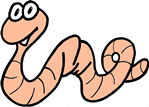Last night I discovered the French word tuyau when looking for drain pipe (tuyau d’écoulement). I hadn’t come across the word before and wasn’t at all sure how to pronounce it. According to my French dictionary it’s pronounced /tɥijo/ – the second symbol represents a voiced labial-palatal approximant, a semi-vowel made with the tongue close to the hard palate and rounded at the lips. Apart from French, it is only used in Mandarin Chinese and Abkhaz, at least according to Wikipedia. Do you know if it is used in any other languages?
tuyau means pipe; a length of piping; a length of rubber tubing; stem (of pipe); flute; (insider) tip. It appears in such expressions as:
– tuyau d’alimentation – feeder pipe
– tuyau d’arrosage – hosepipe; garden hose
– tuyau de cheminée – chimney pipe
– tuyau de descente – downpipe; fall pipe
– tuyau d’échappement – exhaust (pipe)
– tuyau d’orgue – organ pipe
– (chapeau) tuyau de poêle – stovepipe (hat)
– tuyautage – fluting (grooves or furrows, as in cloth); goffering (an ornamental frill made by pressing pleats); giving of a tip; putting in the know
– tuyauter – to flute; to goffer*; to give sb a tip
– tuyauterie – piping; (organ) pipes
– un tuyauteur – informant
– J’ai quelques tuyaux pour toi – I have a few tips for you
– un tuyau crevé – a bad tip
– avoir des tuyaux – to be in the know
– c’est un tuyau increvable – straight from the horse’s mout
Tuyau comes from the Old French tuel (tube, pipe), from Proto-Romance *þûta, from Old High German tûda.
* goffer means to press pleats into (a frill) ; to decorate (the gilt edges of a book) with a repeating pattern; an ornamental frill made by pressing pleats; the decoration formed by goffering books; the iron or tool used in making goffers, and isn’t a word I’ve come across before. It comes from the French gaufrer (to impress a pattern), from gaufre, from the Middle Low German wafel, the root of waffle and wafer.
Sources: About.com, Wiktionary, French Word-A-Day, Reverso, Dicocitations


